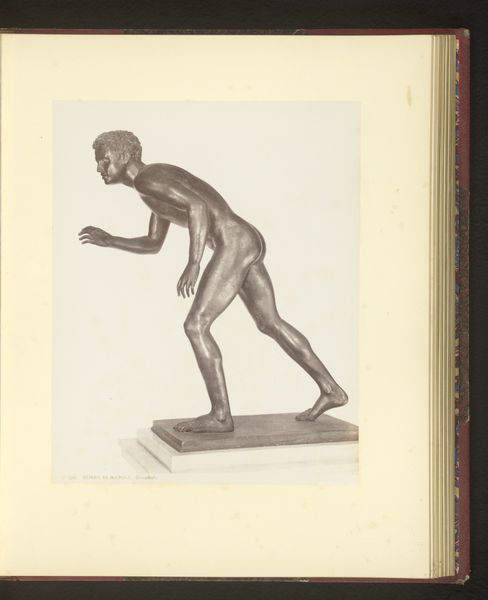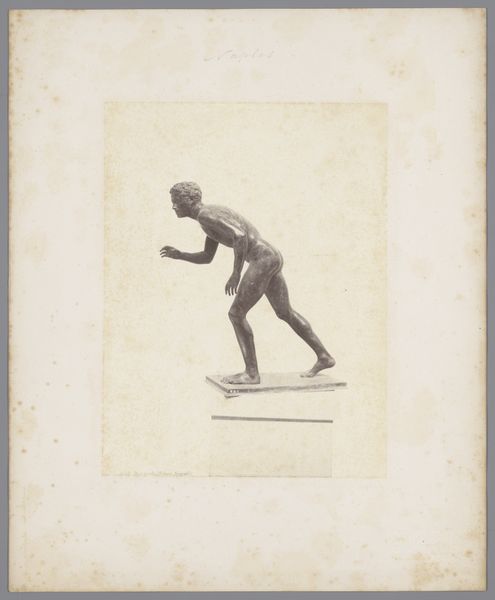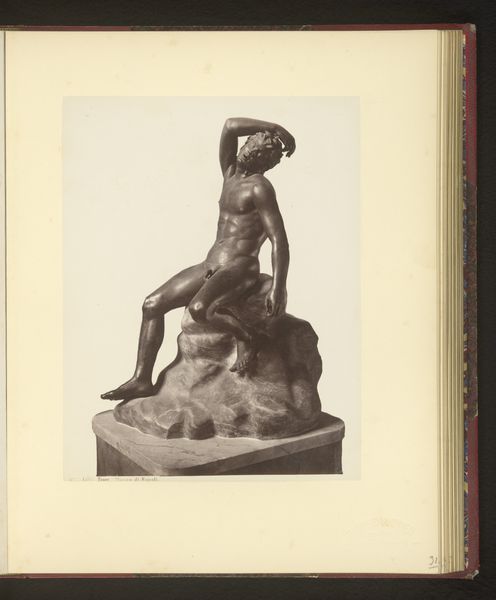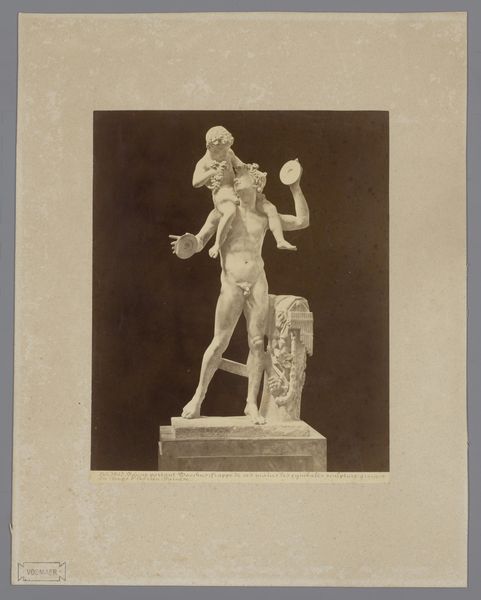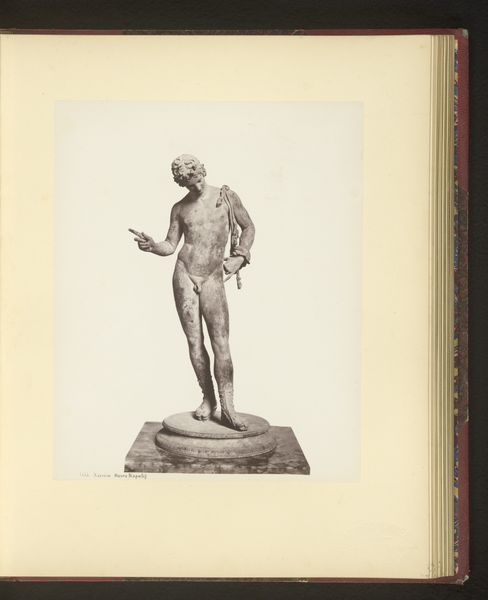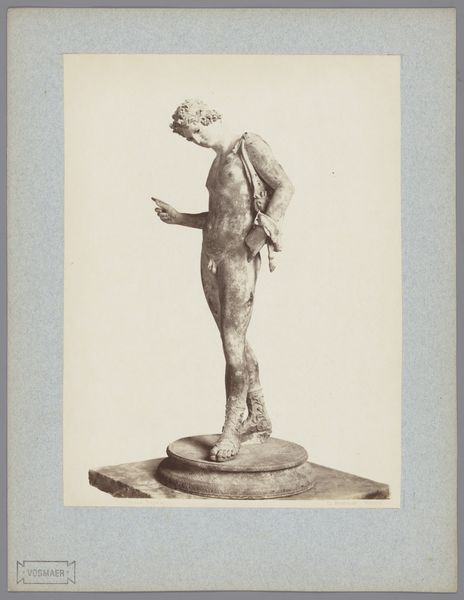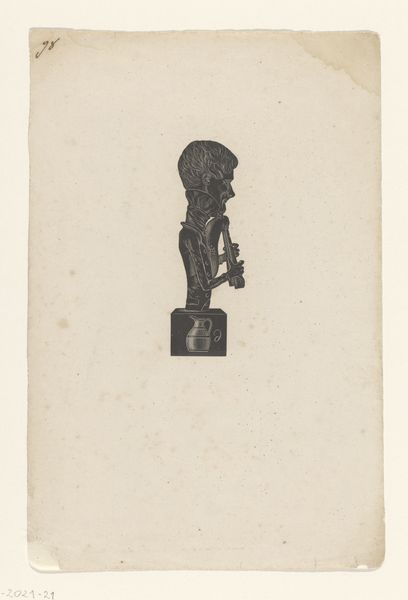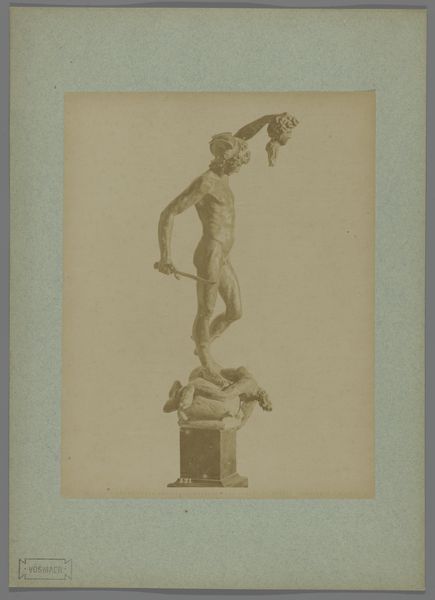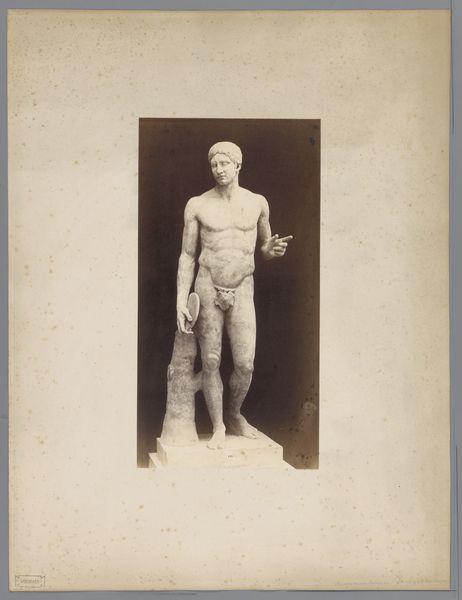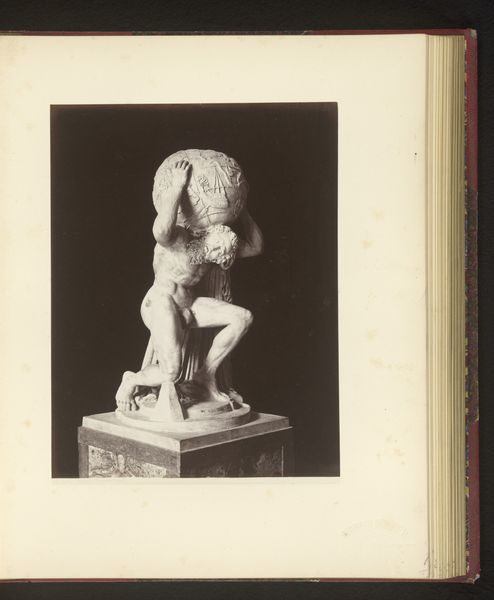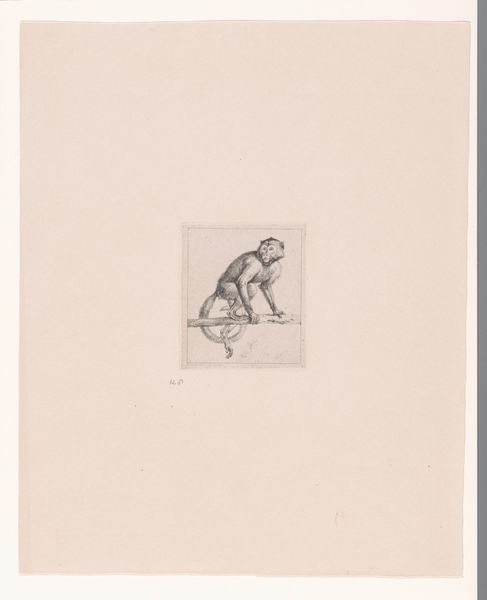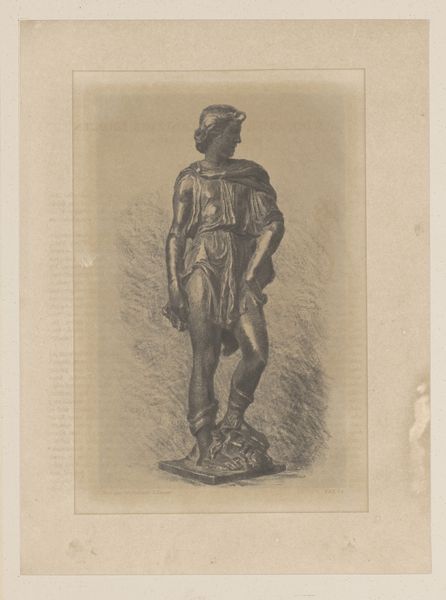
Sculptuur van een discuswerper in de Napolitaanse musea te Napels, Italië 1863 - 1914
0:00
0:00
giorgiosommer
Rijksmuseum
photography, sculpture, gelatin-silver-print
#
portrait
#
toned paper
#
greek-and-roman-art
#
figuration
#
photography
#
ancient-mediterranean
#
sculpture
#
gelatin-silver-print
#
nude
#
remaining negative space
#
realism
Dimensions: height 376 mm, width 307 mm
Copyright: Rijks Museum: Open Domain
Giorgio Sommer made this photograph of a sculpture of a discus thrower in Naples, Italy, in the late 19th century. It presents an interesting intersection of art, history, and the burgeoning field of photography. Sommer's photograph captures a classical sculpture, likely a Roman copy of a Greek original. In the 19th century, such sculptures were potent symbols of European cultural heritage and ideals of beauty. Photography played a crucial role in disseminating these images, making them accessible to a wider audience beyond the elite circles who could visit museums. Consider the social context: Italy was undergoing a period of national unification and grappling with its identity. Classical art served as a powerful link to a glorious past, a source of national pride, and an instrument of cultural and institutional power. To fully understand this image, we might consult photographic journals, museum archives, and historical accounts of cultural tourism in Italy. Only then can we appreciate its role in shaping perceptions of art, history, and national identity.
Comments
No comments
Be the first to comment and join the conversation on the ultimate creative platform.
